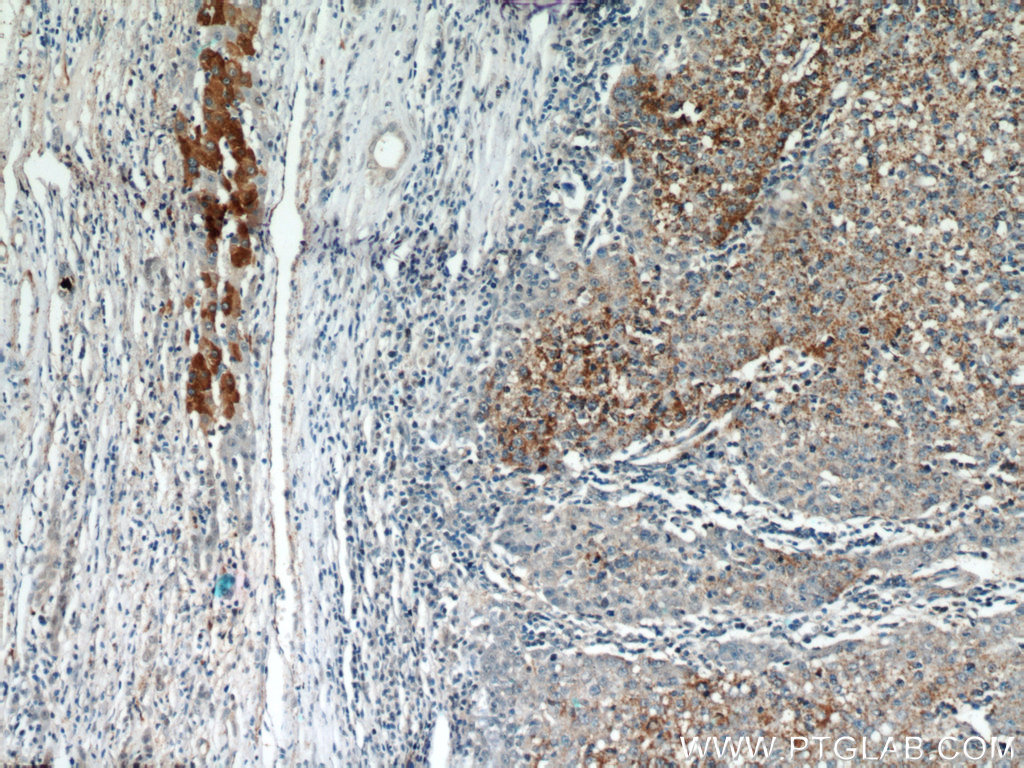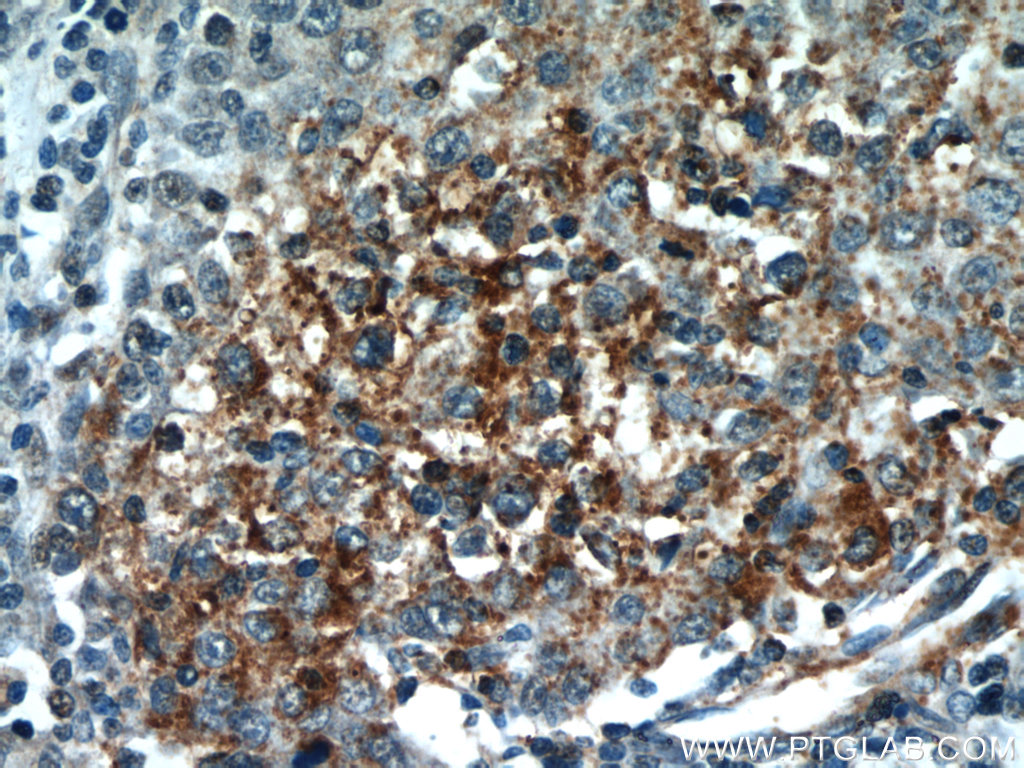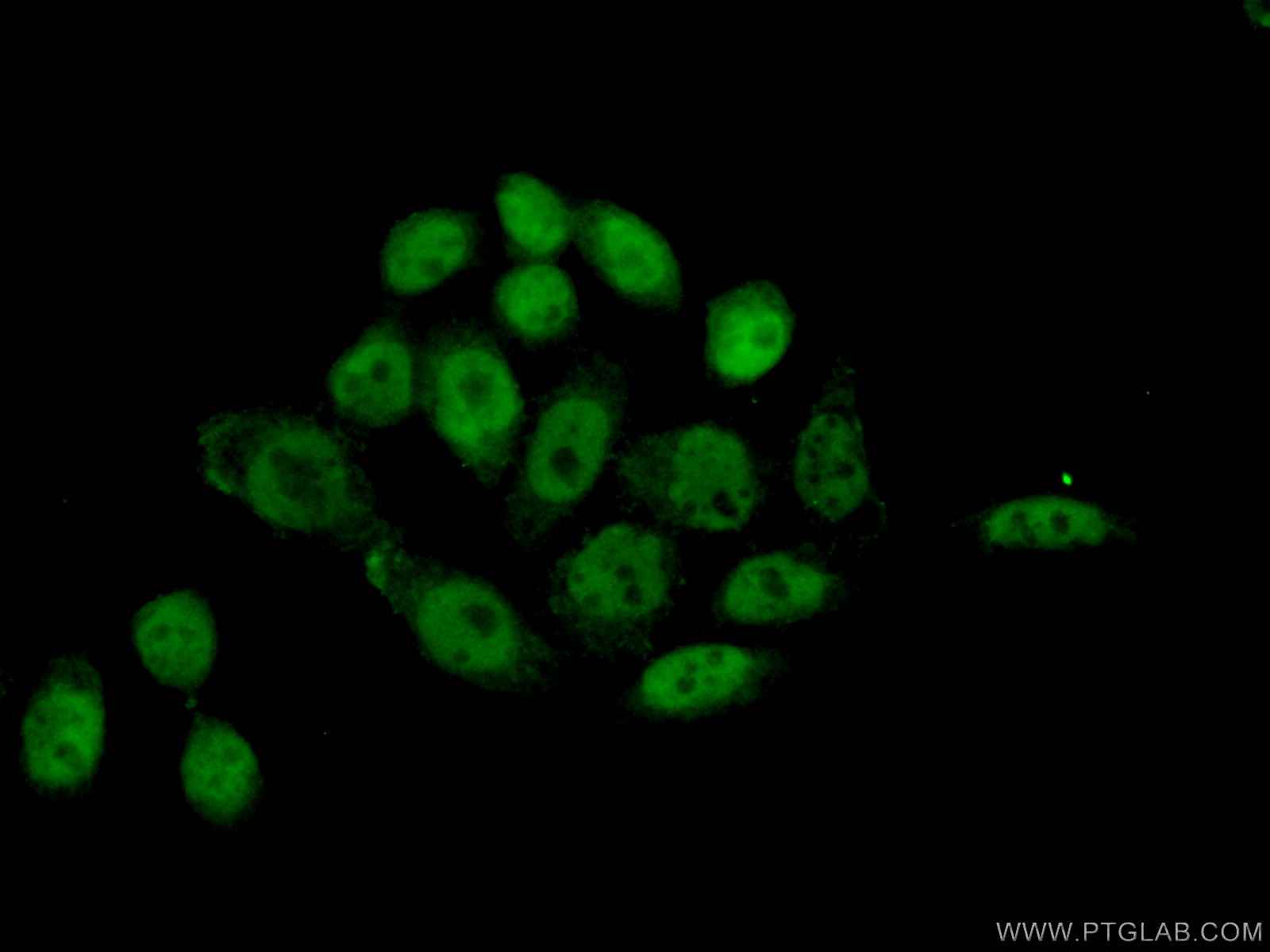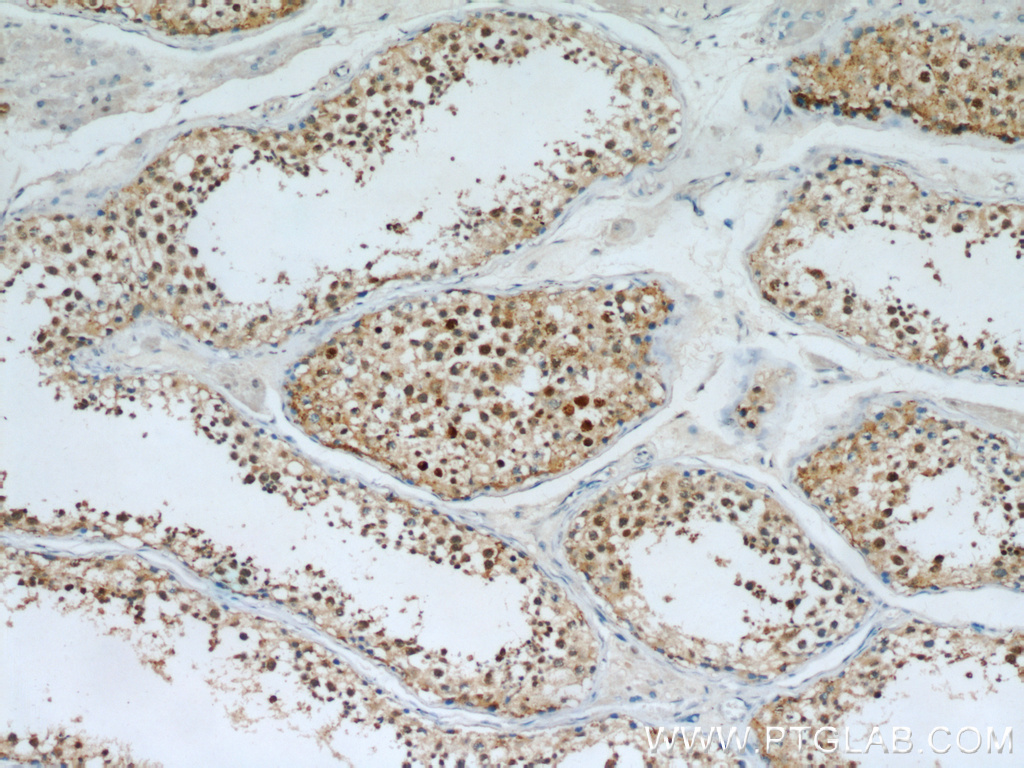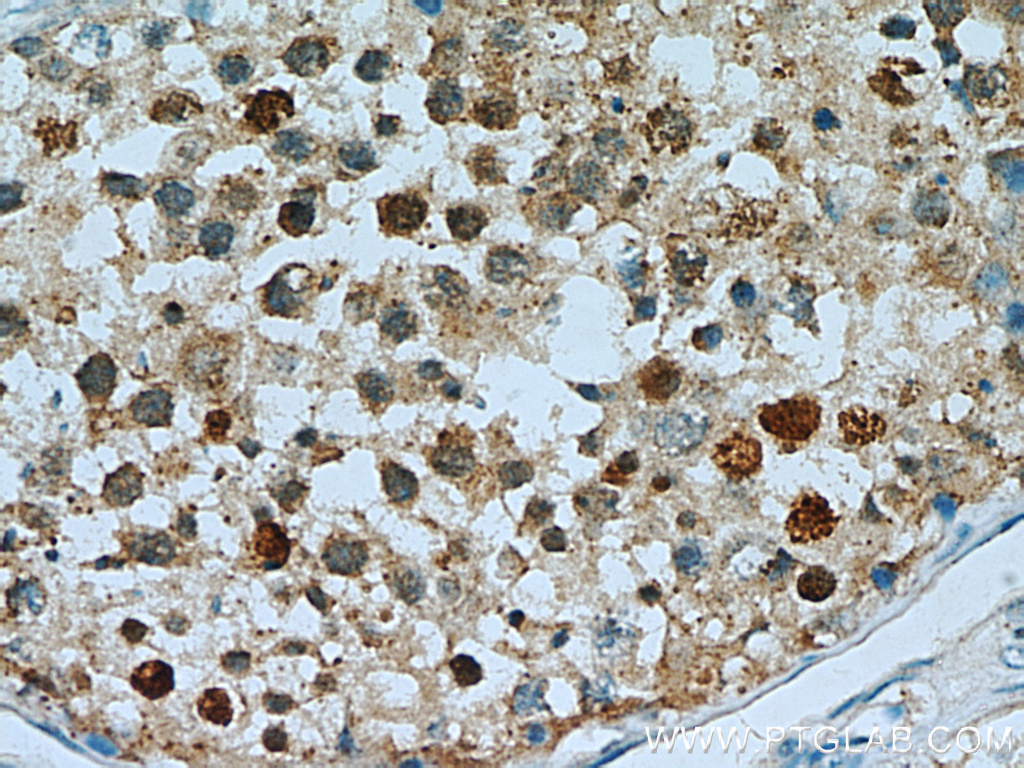验证数据展示
经过测试的应用
| Positive IHC detected in | human liver cancer tissue, human testis tissue Note: suggested antigen retrieval with TE buffer pH 9.0; (*) Alternatively, antigen retrieval may be performed with citrate buffer pH 6.0 |
| Positive IF/ICC detected in | HeLa cells |
推荐稀释比
| 应用 | 推荐稀释比 |
|---|---|
| Immunohistochemistry (IHC) | IHC : 1:20-1:200 |
| Immunofluorescence (IF)/ICC | IF/ICC : 1:50-1:500 |
| It is recommended that this reagent should be titrated in each testing system to obtain optimal results. | |
| Sample-dependent, Check data in validation data gallery. | |
产品信息
21739-1-AP targets PI3 Kinase p110 Beta in WB, IHC, IF/ICC, ELISA applications and shows reactivity with human samples.
| 经测试应用 | IF, IHC, ELISA Application Description |
| 文献引用应用 | WB, IHC, IF |
| 经测试反应性 | human |
| 文献引用反应性 | human, mouse, rat |
| 免疫原 | PI3 Kinase p110 Beta fusion protein Ag16456 种属同源性预测 |
| 宿主/亚型 | Rabbit / IgG |
| 抗体类别 | Polyclonal |
| 产品类型 | Antibody |
| 全称 | phosphoinositide-3-kinase, catalytic, beta polypeptide |
| 别名 | p110 BETA, PI3 Kinase p110 Beta, PI3 kinase subunit beta, PI3K, PI3K beta, PI3K p110(beta), PI3Kbeta, PI3KCB, PIK3C1, PIK3CB, PtdIns 3 kinase subunit beta |
| 计算分子量 | 1070 aa, 123 kDa |
| 观测分子量 | 110 kDa |
| GenBank蛋白编号 | BC114432 |
| 基因名称 | PI3 Kinase p110 Beta |
| Gene ID (NCBI) | 5291 |
| RRID | AB_10755305 |
| 偶联类型 | Unconjugated |
| 形式 | Liquid |
| 纯化方式 | Antigen affinity purification |
| UNIPROT ID | P42338 |
| 储存缓冲液 | PBS with 0.02% sodium azide and 50% glycerol pH 7.3. |
| 储存条件 | Store at -20°C. Stable for one year after shipment. Aliquoting is unnecessary for -20oC storage. |
背景介绍
PIK3CB(phosphatidylinositol 4,5-bisphosphate 3-kinase catalytic subunit beta isoform) is also named as PIK3C1, PI3K-beta, p110beta. The gene encodes a 1070 amino acid protein which belongs to the PI3/PI4-kinase family. Phosphoinositide 3-kinases (PI3Ks) have been implicated as participants in signaling pathways regulating cell growth by virtue of their activation in response to various mitogenic stimuli. The class I PI3 kinases are heterodimers composed of 110 kDa catalytic subunits that associate with regulatory adaptor proteins. Four class I catalytic subunits have been identified, PIK3CA (p110α), PIK3CB (p110β), PIK3CD (p110δ) and PIK3CG (p110γ)(PMID:19177002).
实验方案
| Product Specific Protocols | |
|---|---|
| IHC protocol for PI3 Kinase p110 Beta antibody 21739-1-AP | Download protocol |
| IF protocol for PI3 Kinase p110 Beta antibody 21739-1-AP | Download protocol |
| Standard Protocols | |
|---|---|
| Click here to view our Standard Protocols |
发表文章
| Species | Application | Title |
|---|---|---|
J Adv Res Salidroside sensitizes Triple-negative breast cancer to ferroptosis by SCD1-mediated lipogenesis and NCOA4-mediated ferritinophagy | ||
Cell Mol Gastroenterol Hepatol Mannan-binding lectin via interaction with cell surface calreticulin promotes senescence of activated hepatic stellate cells to limit liver fibrosis progression. | ||
Biochem Pharmacol TANGO1 interacts with NRTN to promote hepatocellular carcinoma progression by regulating the PI3K/AKT/mTOR signaling pathway | ||
J Ethnopharmacol Root extract of Hemsleya amabilis Diels suppresses renal cell carcinoma cell growth through inducing apoptosis and G2/M phase arrest via PI3K/AKT signaling pathway | ||
Cells Determination of WWOX Function in Modulating Cellular Pathways Activated by AP-2α and AP-2γ Transcription Factors in Bladder Cancer. | ||
J Zhejiang Univ Sci B Silencing of DsbA-L gene impairs the PPARγ agonist function of improving insulin resistance in a high-glucose cell model. |
